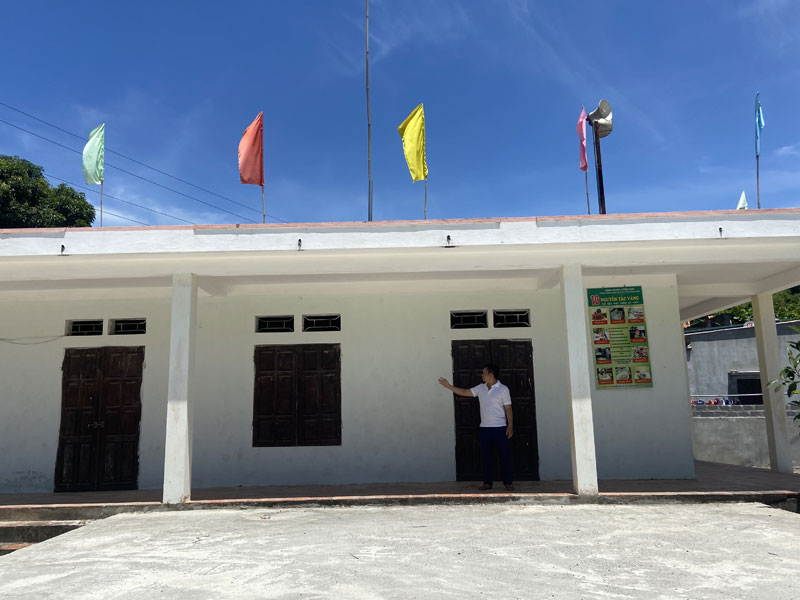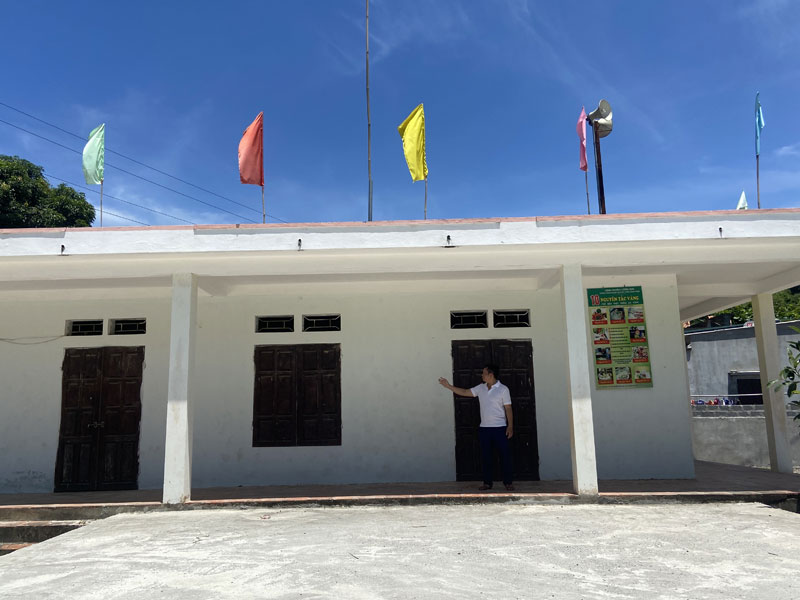



From the supported capital, the cultural house of Rong Can village in Lam Son commune (Luong Son) has been built and put into operation, well serving the collective activities of the local people.
Mr. Nguyen Van Bong, the Head of Doi Residential Area, says: When the district launched the movement to build the new model rural residential area, the regional government quickly propagated and mobilized people to participate and we received an enthusiastic response. From the end of 2018, with the local support and the mobilized fund of over 500 million VND from the households in the area, the local people have contributed their labor to embellish the houses and the alleys, and to improve the facilities. Many kinds of trees, flowers, shade trees have been planted on both sides of the road. The local people clean the village roads, the alleys, the cultural houses, clear the fences, trees, and prun flowers along the roadside once every month.
After nearly 2 years of implementation, the face of the new rural areas, the material and spiritual life of the local people in Doi area has been increasingly raised. With the successful completion of the criteria, Doi residential area has been awarded A prize in the contest "the new model rural residential area, the model garden in the period of 2018-2020” organized by Lac Thuy district.
In the other localities of the province, the movement to build the new model rural residential area is also excitingly taking place. Rong Can Residential Area in Lam Son commune is one of the prominent new model rural residential areas of Luong Son district, which was recognized as the new model rural residential area in 2019. Coming to Rong Vong in these days, you can not only see the perennial fruit gardens which are close to the harvest, the straight concrete road cool with the green trees, but you can also feel the innovative and dynamic atmosphere of the civilized village that has been constantly developing.
Mr. Le Xuan Cuong, the Vice Chairman of perennial the People's Committee of Lam Son commune says: Thanks to the solidarity and efforts of the officials, the party members and the local people, Rong Can Residential Area has positively changed. The income and the living standard of the people have increasingly improved. Under the direction of the district, the communes and the appropriate authorities, the local people have united and made efforts to implement the criteria of building a residential area according to the standards of a model new rural residential area. The community works such as the cultural houses, the sports grounds ... have been mobilized resources to build and have been put into use, serving the needs of collective activities of the local people and children.